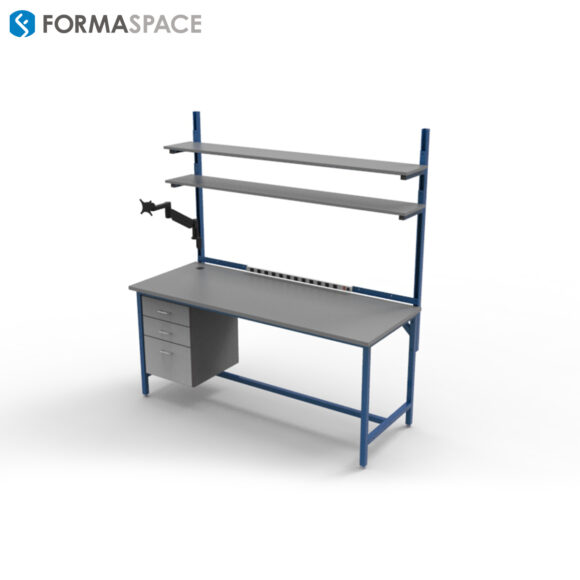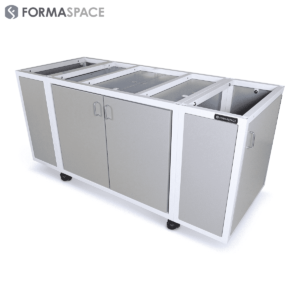Concerns over Climate Change, Rising Seas, and the Future of the Gulf Stream
11,700 years is a long time in human experience.
That’s the length of time that we’ve been in what geologists call the Holocene era – the relatively benign (climate-wise) period since the last great ice age, during which human life has propagated and flourished around the world.
Climate researchers are worried this period of relative stability may be coming to an end.
One critical area of concern is the Atlantic meridional overturning circulation (AMOC), better known as the Gulf Stream, which shuttles warm water from the equator through the Straits of Florida, up the East Coast before turning toward Europe (keeping that continent much warmer than its high latitude would suggest).
The AMOC mechanism is complex, relying on a delicate mixing of waters with varying degrees of salinity and temperature to create a “conveyor belt” that brings warm waters north before they cool off, sink, and return southward.
Melting freshwater glaciers could upset the finely tuned balance of salinity that drives the water circulation in the AMOC, leading to a dramatic reduction in warm Gulf waters that keep Europe’s climate relatively temperate.
European scientists are at the forefront of creating advanced computer models that simulate the physics of these changes. Peter Ditlevsen and Susanne Ditlevsen at the Niels Bohr Institute at the University of Copenhagen in Denmark point to concerns that increasing greenhouse gas concentrations could lead to a collapse of the AMOC by the mid-2000s. At Utrecht University in the Netherlands, physicists René M. van Westen, Michael Kliphuis, and Henk A. Dijkstra created a physics-based climate model that takes into account the freshwater influx to pinpoint the tipping point for the AMOC system to collapse. They also predict an AMOC collapse would have rapid, devastating effects on the European climate, resulting in “a very strong and rapid cooling of the European climate with temperature trends of more than 3°C per decade.”

Using Geo-Engineering Technology to Mitigate Greenhouse Gases: Direct Air Capture
If greenhouse gases in the atmosphere are a primary cause of climate change, how difficult would it be to simply remove them?
A daydream solution would be to – following the mantra of the Boy Scouts to leave the environment cleaner than you found it – create a Rube Goldberg system attached to every pollution source, such as a vacuum cleaner mounted to the roofs of cars that sucks up pollution as you drive down the highway.
That’s pretty far-fetched.
Instead, the Department of Energy is undertaking the construction of two massive land-based prototypes to extract carbon pollution from the air and store it deep underground.
DOE is funding two prototype plants initially – to the tune of $1.2 billion.
The first is Project Cypress, a partnership between Battelle, Swiss-owned Climeworks, Heirloom, and Gulf Coast Sequestration, which will be built in coastal Calcasieu Parish, Louisiana, near the border with Texas.
The second is the South Texas DAC project, a partnership of Occidental Petroleum (OXY) and its subsidiary OnePointFive, which will be located in coastal Kleberg County, Texas, home to the northern stretches of the famous King Ranch.
Each project claims it will capture up to one million metric tons of carbon dioxide per year initially. Vicky Hollub, CEO of Oxy, claimed their plant would be able to scale up to remove 30 million metric tons per year once fully operational.
If these prototypes are successful, the government has allocated a total of $3.5 billion to fund some or all of the 11 direct air capture plants proposed across the US.

How Does Direct Air Capture Work?
As a technology, Direct Air Capture is rather new. The United Nations goes further, calling it unproven, with significant risks involved.
Climeworks AG, working with the Icelandic carbon storage firm Carbfix, has one of the first facilities in existence, the Orca plant located in Iceland, but it can only remove 4,000 metric tons of carbon dioxide annually – reportedly equivalent to the pollution from about 800 conventional ICE cars.
The Climeworks technology is fairly straightforward. Large fans draw in ambient air, and a collection filter traps the carbon dioxide. Once a sufficient amount of C02 is collected, the filter is sealed off and heated to 100C, causing the C02 to be released where it is siphoned off for storage.
If you picked up that this process is energy-intensive, you are correct. Implementing this technology using conventional fossil fuels emitting C02 would be counterproductive, so Direct Air Capture requires using green energy sources, such as renewable energy, or energy recycled from other processes, such as excess heat from a power plant, etc. to provide a net positive environmental benefit.

Does Storing Carbon Create New Environmental Problems?
But capturing the carbon from the atmosphere is only half the battle.
The second half of the problem is figuring out what to do with the captured C02.
While some have proposed injecting C02 gases deep into the ocean, there are legitimate environmental concerns about this approach, including unwanted pH changes that could endanger coral and shellfish.
Injecting C02 into the ground, a process known as “sequestration,” appears to be the default answer for now. But this approach has led to concern about the gas leaking back into the atmosphere, or leaching into drinking water, or even causing shifts in underground geology, potentially leading to future earthquakes.
A more appealing approach is to find useful industrial applications for carbon dioxide that don’t escape to the atmosphere.
Heirloom, the Bay Area startup technology partner of Project Cypress, has been experimenting with using crushed limestone that is heated, allowing it to absorb ambient carbon dioxide, but they have only collected a very modest amount using this method (30 kg!) Nevertheless, they hope to incorporate the captured carbon directly into concrete production in partnership with Canada’s CarbonCure Technologies. If carbon from the atmosphere can be captured and stored in concrete, it could offer a two-fer benefit, as conventional concrete production is one of the biggest emitters of greenhouse gases.
Oxy, the key partner behind the South Texas DAC plant, has its own plans for sequestered C02.
They plan to inject the CO2 they collect from the atmosphere deep into oil and gas wells, effectively acting as a fracking agent (or, in the current parlance, an enhanced oil recovery (EOR) technology) to improve the output of petroleum and natural gas.
Speaking at the 2023 CERAWeek energy conference in Houston, Oxy CEO Vicki Hollub said, “We believe that our direct air capture technology is going to be the technology that helps to preserve our (oil and gas) industry over time.”
Environmentalists are unhappy that Oxy plans to pursue direct air capture as a means to increase oil and gas production, seeing it as a counterproductive move.
Time will tell if these prototype plants can achieve their objectives and if carbon sequestration will benefit the environment and the climate – or not.

Formaspace is Your Energy Research and Production Partner
If you can imagine it, we can build it, at our Austin, Texas factory headquarters.
Talk to your Formaspace Sales Representative or Strategic Dealer Partner today to learn more about how we can work together to make your next construction project or remodel a success.







